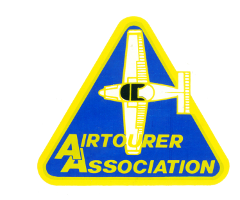History of the Airtourer
The Airtourer, a small two seat training, touring and semi-aerobatic aircraft, was the winning design in a competition organised by the Royal Aero Club in the early 1950’s. A wooden prototype, the Millicer Airtourer was constructed by a small group of enthusiasts in the Melbourne suburb of Williamstown during the late 1950’s and first test flown in April 1959. The prototype was demonstrated to aero clubs and flying schools where significant interest was shown as a Tiger-Moth/Chipmunk replacement. Interest was shown in the design by Mervyn Victor Richardson, Chairman of Victa Ltd who at the time had some aviation manufacturing interests. The first all metal Victa Airtourer 100 (VH-MVA) was flown on the 12th December 1961. This aircraft was later re-engined and was the first Airtourer 115 around 1963. As for FMM (below), it is owned by the Museum of Victoria in Melbourne who plan to display it in a future exhibition.

During the period 1961 to 1966, Victa Ltd., undertook production of the all metal Airtourer, building both 100 and 115 hp models. Production by Victa took place until 1966 when the production closed down (another story!). The manufacturing rights were sold to Aero Engine Services Ltd (AESL) in New Zealand where further production of 115 and 150 hp models took place until 1971.
A total of 168 were completed or significantly completed by Victa in Sydney and a further 80 built by AESL in Hamilton NZ. In actual fact it would be correct to say that 170 serial numbers were issued by Victa and 80 by AESL. Examination of the records show that some of the late serial numbers issued by Victa were completed in NZ and issued with a NZ serial number (starting at 501). In addition, some of the Victa built aircraft were rebuilt in the factory by AESL and issued with NZ serial numbers which accounts for some duplication.
Some 90 aircraft remain in Australia with around 20 or so elsewhere, mainly in NZ and the UK.
 Airtourer Association Inc.
Airtourer Association Inc.